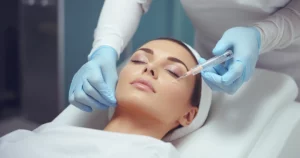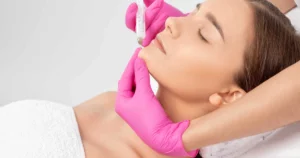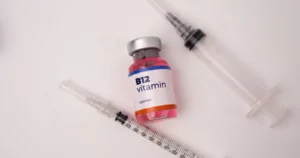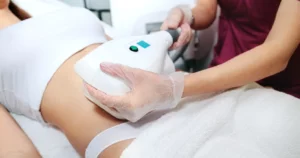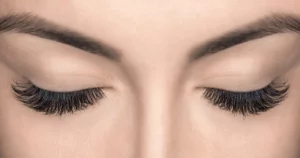
Table of Contents
Statistics suggest that hair loss affects millions of men and women in our country. If you have experienced thinning or shedding, you may be searching for a solution that truly meets your goals. At Auri Aesthetics, we offer an emerging option with a proven track record: NGF therapy. This approach has been gaining attention among those interested in hair restoration solutions that do not rely on surgical methods alone. This blog post will discuss how NGF therapy works, who might benefit from it, and what you can expect during your hair restoration process.
By the end of this article, you will have a stronger understanding of what this treatment can do for your hair concerns. If you have been looking for hair restoration in Gilbert, AZ, read on for important information that could make a difference in your decision-making process.
Understanding NGF Therapy for Hair Restoration
NGF stands for Natural Growth Factor and refers to platelet-rich plasma (PRP), a substance derived from your blood. Platelet-rich plasma is rich in platelets, small cell fragments containing multiple growth factors. These growth factors support cell repair and regeneration in areas like the scalp, skin, and joints. NGF therapy has been used for various medical applications involving tissue healing. Over time, it has found an essential role in non-surgical hair restoration.
What Are Natural Growth Factor Injections?
When we discuss natural growth factor injections, we refer to collecting platelet-rich plasma from a small blood sample. The sample is placed into a centrifuge that rapidly spins blood to separate its components. This creates a nutrient-rich fluid that includes platelets. These platelets hold various growth factors, each with a function in tissue regeneration and repair:
- Platelet-Derived Growth Factor (PDGF): Aids in blood vessel growth, fibrin formation, and cell regeneration.
- Vascular Endothelial Growth Factor (VEGF): Assists in creating new blood vessels.
- Fibroblast Growth Factor-2 (FGF-2): Helps form blood vessels and produce specialized cells that support healing.
- Transforming Growth-Factor-Beta (TGF-b): Participates in bone metabolism and cellular matrix formation.
- Epidermal Growth Factor (EGF): Encourages collagen production, cell growth, and blood vessel formation.
- Insulin-Like Growth Factor (IGF): Plays a role in essential processes in nearly every cell.
When injected into the scalp, this enriched plasma stimulates inactive hair follicles to move into an active growth phase. It can also support newly transplanted follicles, making it a valuable addition to advanced hair restoration solutions.
How NGF Works for Hair Restoration
Stimulating Hair Follicle Activity
During hair restoration injections, the goal is to reawaken dormant hair follicles. Hair follicles can lose activity due to genetics, aging, hormonal changes, or lifestyle factors. The treatment aims to increase blood supply to the follicles and provide essential nutrients by placing platelet-rich plasma directly into thinning areas. This process can help with thinning hair treatment and even serve as a hair loss treatment for men who want to address receding hairlines or sparse areas on the crown.
Two Methods of Administration
- Microneedling with NGF or Exosomes:
In this method, a device with tiny needles creates microchannels in the scalp. The NGF or exosomes are applied topically, allowing the material to absorb into these superficial openings. This supports tissue repair and can stimulate hair growth factors. - Targeted Injections:
The second method applies a topical anesthetic to the treated area. Small platelet-rich plasma or exosome injections are made about every half-inch across the thinning zone. Once the scalp is numbed, the process usually takes less than 30 minutes. Many people find this approach relatively comfortable.
What to Expect Before, During, and After Treatment
Preparation for the Procedure
Before your NGF therapy session, you will have a consultation to discuss your goals for hair restoration. On the day of your session, a small amount of blood is drawn. This sample is immediately placed in a centrifuge for several minutes to separate the platelet-rich plasma. Meanwhile, your scalp is prepared with a topical numbing cream to increase comfort. Our team will guide you through each step and address any questions.
The Procedure Itself
Once your platelet-rich plasma is ready, your provider will perform either microneedling or hair restoration injections directly into the scalp. If injections are used, they will be placed carefully across the targeted region. Any discomfort is usually mild, and the overall process is completed quickly. Because the treatment is minimally invasive, individuals return to normal activities immediately afterward.
Post-Treatment Guidelines
You may notice slight swelling, redness, or tenderness at the injection sites, which commonly resolves within a few days. Anti-inflammatory medications should be avoided right after treatment because they can interfere with the natural process that encourages tissue repair. Your provider will recommend approved methods to address any minor discomfort. Continuing a healthy hair care routine and following your aftercare instructions are also important. Regular check-ins can help track progress and guide any maintenance sessions needed.
Anticipated Timeline and Results
How Long It Takes to See Changes
Most patients receive a series of treatments spaced about a month apart. You may observe less shedding around two to three months after beginning therapy. Over time, improvements in thickness and length can become more apparent. Once optimal results are achieved, maintenance sessions are scheduled every three to six months, depending on individual responses.
Who Can Benefit from NGF?
Men and women with thinning areas, including those seeking a hair loss treatment for men, often consider NGF. It can be paired with other approaches, such as Minoxidil or surgical transplants, to support better overall outcomes. Because NGF is taken from your blood, the risk of adverse effects is typically low. If they occur, side effects can involve minimal bruising, swelling, or itching at the application sites.
Conclusion – Take the Next Step Toward Hair Restoration
Hair loss does not have to be a permanent concern. With the support of advanced hair restoration solutions such as NGF, many people are improving hair density and coverage. Non-surgical hair restoration offers a practical path for those who want to avoid more invasive procedures and still receive meaningful results. This treatment can give you a renewed sense of confidence in your appearance.
If you are interested in hair restoration in Gilbert, AZ, or have questions about whether NGF therapy might be right for you, our team at Auri Aesthetics is here to help. We specialize in supporting individuals who want to enhance their hair’s health and fullness using a proven regenerative method.
To begin, contact us for a consultation. We are committed to answering your questions and guiding you through your treatment plan. When you feel ready to move forward, start your hair growth journey with us by getting in touch today. We look forward to assisting you with healthy, fuller hair.
